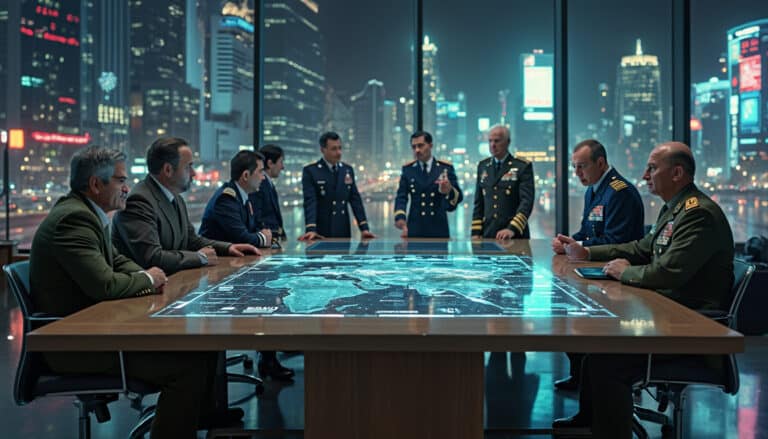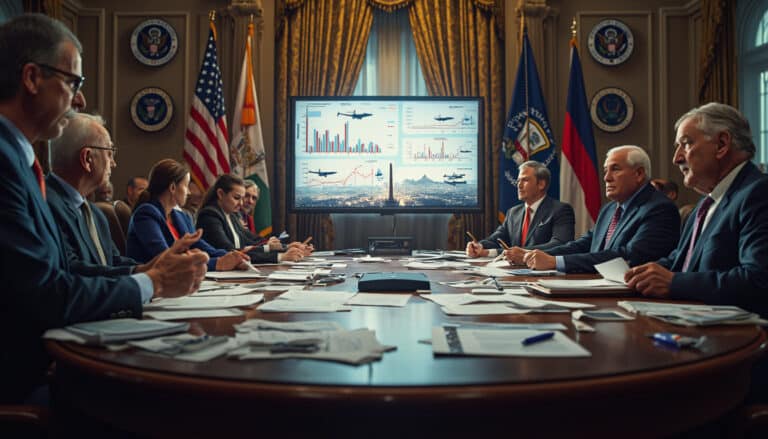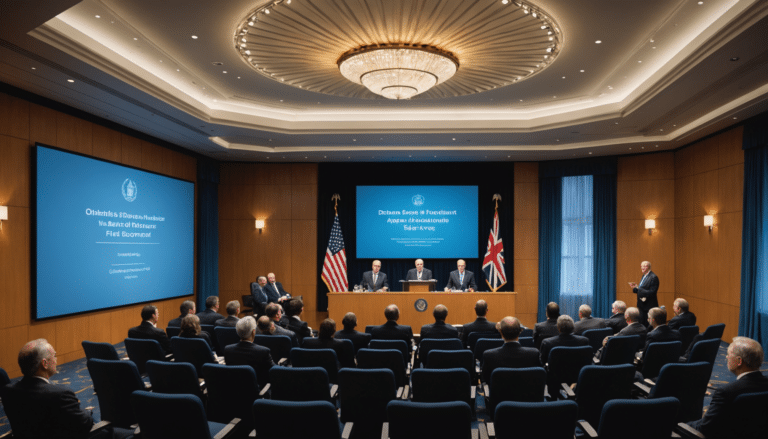The defense landscape is evolving at a breakneck pace, integrating cutting-edge technologies to enhance collective security.
The Pentagon, aware of this dynamic, seeks to assert itself on the international stage by joining NATO’s technology accelerator.
This initiative, dubbed DIANA, aims to catalyze cooperation among allied nations in key areas such as artificial intelligence and quantum technologies.
By seeking legislative authorization, the United States aims to significantly contribute to this innovative program. DIANA focuses on technological priorities such as energy resilience and secure monitoring, aligning NATO members’ research and development efforts. With planned funding of $12.5 million for fiscal year 2024, followed by $35 million between 2025 and 2028, the initiative promises to stimulate innovative solutions to current challenges. Simultaneously, competitions will be held in several international cities, inviting companies to propose technologies tailored to defense issues.

The Pentagon recently submitted a legislative request to Congress seeking authorization to participate in NATO’s defense technology accelerator, known as DIANA (Defense Innovation Accelerator for the North Atlantic). This initiative is part of ongoing efforts to strengthen technological cooperation among allied nations, particularly in emerging areas such as hypersonics, artificial intelligence, space, and quantum technologies.
Table des matières
ToggleWhat is the objective of the Pentagon’s participation in DIANA?
The participation of the U.S. Department of Defense in DIANA aims to support the implementation of several key elements of NATO’s agenda. According to the DoD’s proposal, without a new statutory authorization, the United States will not be able to contribute to DIANA or to other jointly funded research and development programs essential to NATO. The request includes an initial funding of $12.5 million for fiscal year 2024, with an expected increase of $35 million between 2025 and 2028.
This initiative would not only strengthen technological partnerships within NATO but also create a grant program to support startups and projects focused on defense or NATO-related efforts. The financial commitment of member states in DIANA is based on a joint funding model, where each nation chooses to invest or not, unlike the mandatory common fund.
What are DIANA’s priority technological areas?
The technological priorities for DIANA in 2023 include energy resilience, sensing, monitoring, and secure information sharing. These areas are crucial for addressing current defense challenges and anticipating future threats. DIANA is also planning to launch its first series of competitions this fall in five cities: Tallinn, Turin, Copenhagen, Boston, and Seattle. At these events, companies will utilize emerging technologies to solve real defense problems.
DIANA will play a key role in enhancing NATO’s technological capabilities by enabling close collaboration among allied nations. For example, similar initiatives can be observed in Draghi’s call for total access for defense companies to European financing in the face of Putin’s threat to Europe.
How does DIANA support startups and innovation?
DIANA not only promotes collaboration among allied nations but also offers significant opportunities for innovative companies. The program creates an environment conducive to the development of cutting-edge technologies by supporting startups through grants and partnerships with affiliated test centers spread across more than 100 countries. This approach allows companies to benefit from diverse resources and expertise, thus accelerating the market deployment of their innovations.
Moreover, programs such as the one Maryland has expanded to support startups in marketing defense technologies perfectly illustrate DIANA’s positive impact. For more information, check out deftech-pour-soutenir-les-startups-et-les-petites-entreprises-dans-la-commercialisation-des-technologies-de-defense/”>this article.
What is Jeffrey Singleton’s role in DIANA?
In February, the Department of Defense appointed Jeffrey Singleton as the U.S. chief representative and head of delegation to NATO’s Scientific and Technological Advisory Council. Singleton plays a crucial role as a U.S. representative on DIANA’s board, facilitating coordination and implementation of NATO’s technological initiatives. His appointment underscores the importance the United States places on this international technological collaboration.
Singleton’s presence in DIANA ensures synergy between U.S. research and development efforts and NATO’s goals, thereby strengthening collective defense capabilities. For more on EU technological initiatives, you can read this article.
What advantages do allied nations gain from participating in DIANA?
Participation in DIANA provides many benefits to allied nations, including access to advanced technologies and the opportunity to collaborate on critical defense projects. By engaging in DIANA, NATO members can share resources, knowledge, and innovations, thereby strengthening the collective defense posture of the alliance. Furthermore, DIANA enables the creation of a network of test centers and deep-tech accelerators across partnering countries, facilitating innovation and the rapid development of advanced technological solutions.
For example, DIANA supports over 28 deep-tech accelerators, two of which are located in North America, thus offering opportunities for transatlantic collaboration. These partnerships are essential for addressing emerging threats and for maintaining NATO’s technological advantage. To learn more about the increases in the British defense budget and its aspirations, visit this article.
What potential challenges does the Pentagon’s participation in DIANA face?
While the Pentagon’s participation in DIANA presents numerous advantages, it also comes with certain challenges. One of the main obstacles is obtaining the necessary legislative authorization, without which the United States will not be able to actively participate in DIANA programs. The DoD’s proposal highlights the urgency of this legislation to avoid an exclusion of the United States from critical NATO defense technology initiatives.
Additionally, coordination among different allied nations and the management of shared funding may pose logistical and administrative challenges. Ensuring transparency and efficiency in the decision-making process is essential to maximize the impact of investments and collaborations. Despite these challenges, the continued engagement of the Pentagon and allies in DIANA demonstrates a shared commitment to strengthening collective security through technological innovation.
What is the importance of technological innovation for defense?
Technological innovation plays a crucial role in modernizing defense capabilities and responding to contemporary threats. Technologies such as artificial intelligence, hypersonics, and space systems are revolutionizing how nations approach security and defense. DIANA aims to leverage these advancements to enhance resilience, responsiveness, and effectiveness of allied armed forces.
By investing in emerging technologies, NATO nations can anticipate and neutralize threats before they materialize. Furthermore, innovation fosters the creation of flexible and adaptive solutions capable of addressing the dynamic challenges of the current geopolitical landscape. For a broader perspective on technological innovation in Europe, check out the DefTech innovation and technology seminars.
How does DIANA’s funding impact the defense industry?
The funding proposed by the Pentagon for DIANA has a significant impact on the defense industry, particularly for small businesses and innovative startups. By allocating substantial funds, DIANA creates a favorable environment for experimentation and the development of new technologies. This not only diversifies sources of innovation but also stimulates competitiveness within the defense industry.
Investments in DIANA also promote the creation of specialized jobs and the development of advanced technological skills, essential for maintaining the strategic edge of NATO allies. Moreover, by supporting projects focused on critical areas such as cybersecurity and space technologies, DIANA contributes to enhancing nations’ ability to protect their infrastructures and respond effectively to asymmetric threats.
To discover how other regions support innovation in defense, explore the European Union’s momentum towards essential new space and electronic technologies.
What are the next steps for DIANA and the Pentagon?
Following the submission of the legislative request, the Pentagon awaits Congress‘s approval to officially engage in DIANA. Once authorization is obtained, the United States will be able to begin allocating the necessary funds and actively participating in the various initiatives and competitions organized by DIANA. The launch of the first series of competitions this fall will mark an important milestone, allowing companies to showcase their innovations and contribute to solving real defense challenges.
Meanwhile, the Pentagon will continue to collaborate with Jeffrey Singleton and other leaders within DIANA to align U.S. technological objectives with those of NATO. This collaboration aims to strengthen the synergy between national and allied efforts, thus ensuring a coordinated and effective response to global threats.
To stay informed about future developments and opportunities offered by DIANA, interested companies can follow announcements and calls for applications, particularly those concerning startups and innovative defense projects. Visit the DefTech seminars to learn more about upcoming sessions and funding opportunities.
The Pentagon’s request to fund DIANA represents a major advance in technological cooperation within NATO. By supporting innovation and facilitating collaboration among allied nations, DIANA promises to strengthen collective security and effectively respond to contemporary defense challenges. The approval of this initiative by Congress will mark a decisive step for the future of technological defense and innovation in the service of international security.
























